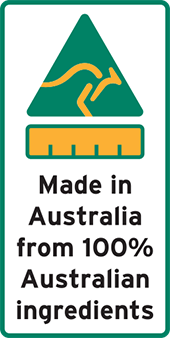Wait long enough and everything bad for you is good again. Sugar? Naturally better than high-fructose corn syrup. Chocolate? A bar a day keeps the doctor away. Caffeine? Bring it on.
Lard, however, has always been a ridiculously hard sell. Over at least the last 15 years, it's repeatedly been given a clean bill of health, and good cooks regularly point out how superior this totally natural fat is for frying and pastries. But that hasn't been enough to keep Americans from recoiling—lard's negative connotations of flowing flesh and vats of grease and epithets like lardass and tub of lard have been absurd hurdles. But no longer. I'm convinced that the redemption of lard is finally at hand because we live in a world where trendiness is next to godliness. And lard hits all the right notes, especially if you euphemize it as rendered pork fat—bacon butter.
Lard has clearly won the health debate. Shortening, the synthetic substitute foisted on this country over the last century, has proven to be a much bigger health hazard because it contains trans fats, the bugaboo du jour. Corporate food scientists figured out long ago that you can fool most of the people most of the time, and shortening (and its butter-aping cousin, margarine) had a pretty good ride after Crisco was introduced in 1911 as a substitute for the poor man's fat. But shortening really vanquished lard in the 1950s when researchers first connected animal fat in the diet to coronary heart disease. By the '90s, Americans had been indoctrinated to mainline olive oil, but shortening was still the go-to solid fat over lard or even butter in far too many cookbooks.
I have to admit even I was suckered by the nutrition nuttiness, despite having been all but weaned on lard in a Mexican neighborhood in Arizona. The great Mexican cooks in kitchens on either side of our house used it to make wondrously supple flour tortillas and almost airy tamales, while my Oklahoma-born dad worked it into biscuits and melted it for frying anything in his cast-iron skillet before we could afford, as he always put it, to "eat like white folks." (Peasant food has cachet only if you are not forced to live on it.) As a food writer, I learned early on that it was considered a four-letter word in recipes, even when it was essential for authenticity. (You can substitute butter in Mexican aniseed cookies called bizcochos, but they won't be as crisp, crunchy, and delicate.)
That's all changed. Now you could even argue that lard is good for you. As Jennifer McLagan points out in her celebrated book Fat: An Appreciation of a Misunderstood Ingredient, With Recipes, lard's fat is also mostly monounsaturated, which is healthier than saturated fat. And even the saturated fat in lard has a neutral effect on blood cholesterol. Not to mention that lard has a higher smoking point than other fats, allowing foods like chicken to absorb less grease when fried in it. And, of course, fat in general has its upsides. The body converts it to fuel, and it helps absorb nutrients, particularly calcium and vitamins.
What matters more, though, is that lard has become the right ingredient at the right time. It fits perfectly into the Michael Pollan crusade to promote foods that have been processed as minimally as possible: Your great-grandmother surely cooked with it, so you should, too.
Add to that the new awareness that what you eat matters environmentally—if you are going to eat an animal on a planet at risk from too many humans raising too many animals to eat, you have to eat the whole thing. Lard is just about the last stop before the squeal when pork producers are extracting every savory bit from a pig.
That environmental consciousness coupled with competitive cooking has resulted in the nose-to-tail trend set off by British chef Fergus Henderson. Walk into any high-end restaurant these days and pork chops are less prevalent than pig's ears, trotters, and jowls. The salumi/charcuterie craze has also been great for enhancing lard's profile, particularly thanks to lardo—pork belly cured Tuscan-style with wine and herbs and served in thin slices over warm bread or on pizza. If Mario Batali says it's good, diners everywhere listen.
The best lard is leaf lard, from the fat around the kidneys of a hog, preferably a heritage hog. Flying Pigs Farm sells this at the Greenmarket in Union Square in New York City for $6 per 8-ounce container, and it sells out fast. Lard from the supermarket can still be pretty scary; most of it has been hydrogenated to make it last longer.
(As I learned from lard crusader Zarela Martinez in New York, you can make your own if you can get your hands on top-quality fat from a small producer—back, belly, or kidney fat will all work. Cut it into chunks and cook them very slowly over low heat until the fat seeps out and only crispy bits are left. Strain it and save the fat in the refrigerator almost indefinitely. Salt the cracklings and eat them as what Mexicans call chicharrones.)






